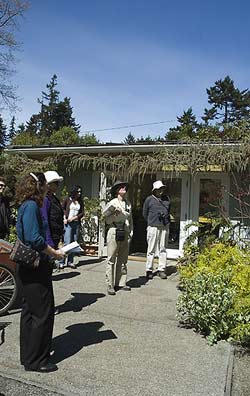How to Help
The E.B. Dunn Historic Garden Trust would like the public to help in its efforts to
• Maintain the integrity of the extant neighborhood forest. Funding for a neighborhood awareness and education campaign is needed. Many neighboring residents enjoy the gardens as members of the Foundation; however, many remain unaware of the threats to the forests and their potential role in its preservation.
• Raise the significance of the garden on the National Trust register in order to accurately recognize its historic importance, and to increase its eligibility for conservation support.
• Funding is also needed to complete a full Cultural Landscape Report including review and organization of the photographic archive, documentation of rehabilitation projects, completion of the historic plant inventory report, and a more detailed review of the landscape's evolution over time. This will enable the completion of a strategic plan with prioritized projects to guide fund raising for garden conservation.
• Support on-going research regarding the gardens. For example, to address the looming tree crisis, the Trust needs a computer-assisted simulation of the changes to the three-dimensional visual structure of the gardens as they evolved between 1916 and the present. There are at least four important periods to reproduce: Arthur Dunn's implementation of the Olmsted plan and its appearance at mid-century, the Edward B. Dunn expansion and management of the original Olmsted plan, the exemplary rehabilitation work since the site was listed on the National Register in 1991, and future projections of its appearance with the deterioration of the forest. Approximately $30,000 is needed for a graduate assistantship and computer equipment to support a student interested in computer-based historic preservation to accomplish this research. The information from the project would provide the basis for a vegetation management plan to protect and guide the replanting of the forest, consistent with the Olmsted plan, for the foreseeable future.
• Support the redevelopment of one of the three dwellings as a public outreach center. The Northwest Garden Archive would gather the horticultural records of several historic gardens in the region in a location accessible to the public and scholars within the Dunn Gardens or, as is being explored, at the Center for Urban Horticulture on the University of Washington campus.
• Support for the reacquisition of portions of the garden previously sold, both from the Dunn Garden estate and the companion Agen parcel.
• And, consistent with the Trust mission, assist other garden conservation projects such as is being accomplished with the nearby Kruckeberg Gardens.


